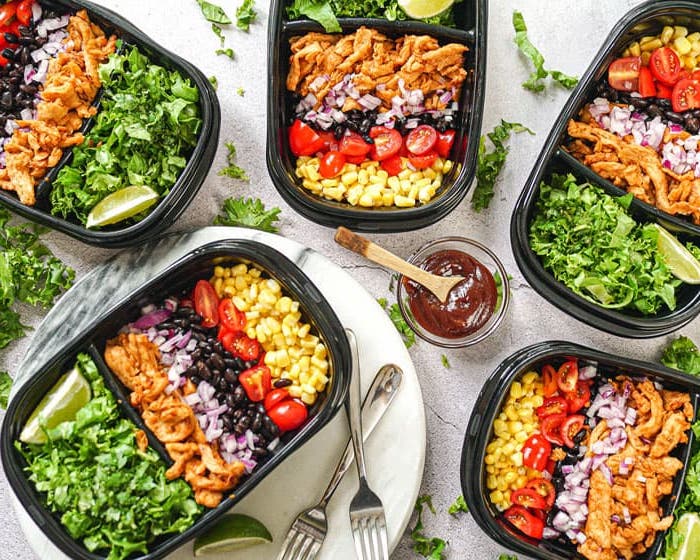The concept of meal prep has gained significant traction in recent years, and for good reason. With our busy lifestyles and the constant hustle, preparing healthy meals in advance can save time, reduce stress, and help maintain a balanced diet. This article explores top meal prep hacks that will ensure you have delicious, healthy meals ready to go, giving you more time to focus on what truly matters.
Meal prep

Meal prepping is not merely cooking in bulk; it’s a lifestyle approach that prioritizes health and efficiency. By dedicating a few hours each week to plan, shop, and prepare your meals, you set yourself up for success in terms of nutrition. The key elements of effective meal prep include selecting recipes that align with your dietary needs, organizing your kitchen space, and utilizing smart storage solutions.
One of the most appealing aspects of meal prep is its adaptability. Whether you’re a vegetarian, vegan, or follower of a high-protein diet, meal prep can accommodate any dietary preference. Furthermore, meal prep can help minimize food waste by ensuring you use ingredients before they spoil.
Understand Your Nutritional Needs
Before diving into meal prep, it’s essential to understand your nutritional needs.
Your requirements may vary based on several factors, including your age, gender, activity level, and specific health goals.
- Consultation with a Professional: It’s advisable to consult with a registered dietitian or nutritionist. They can provide personalized guidance tailored to your lifestyle.
- Research Nutrient Requirements: Familiarize yourself with basic nutrient groups: carbohydrates, proteins, fats, vitamins, and minerals. Knowing how much of each group you need daily can guide your choices.
- Dietary Restrictions: If you have allergies or specific dietary restrictions (e.g., gluten-free, dairy-free), make sure to account for these in your meal planning.
Understanding your nutritional needs allows you to create a diverse grocery list that supports your health goals and keeps mealtime interesting.
Choosing the Right Recipes
Once you comprehend your nutritional requirements, the next step is selecting recipes for your meal prep.
- Balanced Meals: Aim for meals that combine proteins, healthy fats, and complex carbohydrates. For example, a quinoa salad with chickpeas, avocado, and mixed greens offers a complete nutrient profile.
- Batch Cooking: Opt for recipes that lend themselves well to batch cooking. Casseroles, soups, and stews are excellent choices as they often improve in flavor after sitting for a day.
- Freezable Options: Consider dishes that freeze well, allowing you to store extra portions for later. This increases your variety while reducing the chance of eating the same thing repeatedly.
Choosing the right recipes is crucial for creating time-saving healthy meals you can make in advance while ensuring that your dietary preferences and needs are met.
Organizing Your Kitchen
Creating an efficient workspace is vital for successful meal prep.
- Declutter Your Space: Take some time to organize your kitchen. Remove items that you don’t frequently use and make room for the tools and ingredients necessary for meal prepping.
- Invest in Quality Containers: Good-quality, stackable containers can optimize your fridge and freezer space. Look for BPA-free options that are microwave and dishwasher safe.
- Labeling System: Implement a labeling system for your containers. Use color-coded labels or a marker to indicate the contents and preparation date, ensuring you consume items while they’re still fresh.
An organized kitchen contributes to a smoother meal prep process, ultimately saving you time during the week.
Time Management Techniques
Efficient time management is critical when it comes to meal prep.
- Set Aside Dedicated Time: Designate a specific day and time for meal prepping each week. Many people choose Sundays, but find a time that works best for you.
- Multitasking: While one dish is cooking, start chopping vegetables for another. Utilizing multiple burners in the kitchen can significantly decrease your overall prep time.
- Quick Clean-Up: After each cooking session, take five minutes to tidy up your workspace. A clean environment promotes motivation for your next meal prep session.
Mastering time management techniques can transform meal prep from a daunting task into a streamlined routine, leading to greater consistency and healthier eating habits.
Time-saving healthy meals you can make in advance
As the name suggests, time-saving healthy meals you can make in advance offer significant advantages for busy individuals and families. These meals are designed to be prepared ahead of time and stored for convenient access throughout the week.
Choosing the right meals ensures you remain committed to a healthy lifestyle without compromising on taste or nutrition.
Breakfast Options
Breakfast is often described as the most important meal of the day, making it essential to prepare it thoughtfully.
- Overnight Oats: Combine rolled oats with milk (or a non-dairy alternative) and your favorite toppings like nuts, seeds, and fruits. Prepare several jars at once so you can grab them quickly in the morning.
- Egg Muffins: Whisk eggs with diced vegetables and protein sources like turkey or cheese, pour the mixture into muffin tins, and bake. These bite-sized delights are easy to heat up and customize to your preferences.
- Smoothie Packs: Portion out frozen fruits and leafy greens in freezer bags. In the morning, simply blend with your choice of liquid for a nutritious breakfast on the go.
These quick breakfast ideas will energize you every morning while allowing you to savor the flavors without spending time cooking.
Lunch Ideas
A well-planned lunch can keep your energy levels up during the day.
- Grain Bowls: Start with a base of grains (like brown rice or quinoa), add roasted vegetables, protein (chicken, tofu, or beans), and top it off with a tasty dressing.
- Wraps and Sandwiches: Whole grain wraps filled with lean meats, veggies, and spreads (like hummus or avocado) make great lunches. You can assemble them ahead of time and wrap them tightly to prevent sogginess.
- Chili or Soup: Make a large pot of chili or soup that you can refrigerate or freeze in individual portions. Pair it with whole grain bread for a filling meal.
Having a variety of lunch options ensures that you won’t get bored with your meals while also achieving your nutritional goals.
Dinner Solutions
Dinner is often the trickiest meal to plan, especially after a long day.
- Sheet Pan Dinners: Toss your choice of protein and vegetables onto a sheet pan and roast them together. This method minimizes cleanup while maximizing flavor.
- Casseroles: Dishes like lasagna or baked ziti can be made in larger quantities and portioned for later. They are easy to reheat and often taste even better the next day.
- Stir-fries: Pre-cut your vegetables and marinate your proteins in advance. When it’s time for dinner, throw everything into a hot skillet for a quick and nutritious meal.
Opting for these dinner solutions will save you time while helping you maintain a balanced diet.
Snack Preparations
Don’t forget about snacks! Healthy snacking can help curb cravings and keep your metabolism running smoothly.
- Energy Balls: Combine oats, nut butter, honey, and chocolate chips or dried fruit for no-bake energy bites. Store them in the fridge for a quick pick-me-up.
- Veggie Snack Packs: Portion out cut vegetables like carrots, cucumbers, and bell peppers into snack bags. Pair them with a small container of hummus or guacamole for dipping.
- Fruit Parfaits: Layer Greek yogurt with granola and fresh fruit in individual cups. These make great grab-and-go snacks that are both satisfying and nutritious.
By preparing healthy snacks, you’ll avoid reaching for unhealthy options when hunger strikes.
Meal Prep for Families
Preparing meals for families can seem overwhelming, but with some organization, it’s entirely manageable.
- Involve the Family: Get everyone involved in meal prep. Children can help with washing veggies, while older kids can assist with measuring and mixing. This makes it a fun family activity.
- Theme Nights: Create theme nights for your meals to keep things exciting. Taco Tuesdays or Italian Fridays allow for creativity while simplifying decision-making.
- Make it Visual: Using clear containers helps children see their options. Include fun notes or stickers to make choosing meals more enjoyable for them.
Making meal prep a family affair fosters healthy habits while creating bonding moments.
Incorporating Variety
To prevent meal prep fatigue, it’s crucial to incorporate variety into your meals.
- Explore Global Cuisines: Try recipes from different cultures such as Thai curries, Mediterranean bowls, or Mexican tacos. This opens up new flavors and keeps your meal prep interesting.
- Seasonal Ingredients: Utilize seasonal produce to enhance the freshness of your meals. Shopping at local farmer’s markets can inspire creativity and introduce new ingredients.
- Cooking Challenges: Set challenges for yourself, such as using one ingredient in various ways throughout the week. This encourages innovation in the kitchen and prevents monotony.
Embracing variety in your meal prep will keep your culinary adventures exciting and enjoyable.
Conclusion
In conclusion, adopting meal prep can significantly enhance your ability to enjoy healthy, time-saving meals throughout the week. By understanding your nutritional needs, choosing appropriate recipes, organizing your kitchen, and implementing effective time management strategies, you can seamlessly integrate meal prep into your lifestyle. Moreover, by exploring various meals and involving family members, you create an enjoyable cooking experience that aligns with your health goals. Embrace the art of meal prepping today and take a step toward a healthier, more organized life.


